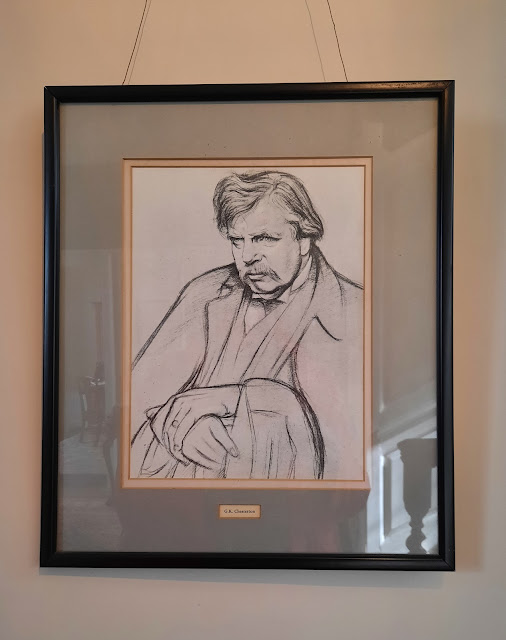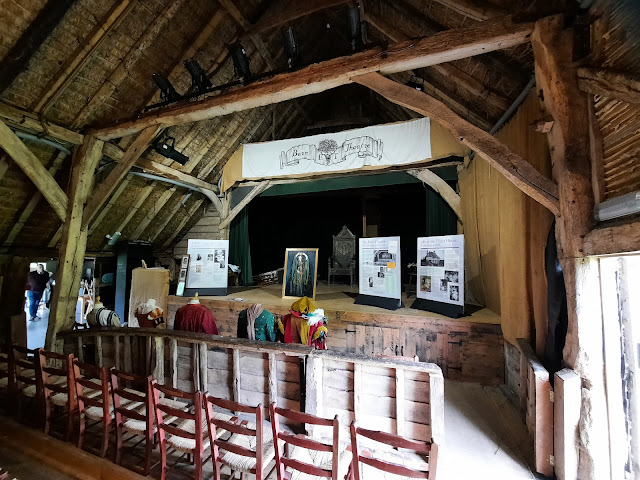Whilst in Sussex we visited three National Trust houses owned by famous people. Here's a photo heavy overview of our visits. I have linked to the National Trust pages if you'd like to know more and I have quoted their overview to give a background to each house.
Lamb House is a town house in the centre of Rye, a quaint English town. The ticket office is in the house next door and we were quite amused to be given a 'calling card' to present on entering the actual house, a step back in time.
The American novelist Henry James discovered Rye and Lamb House quite by chance whilst visiting his friend, the architect Edward Warren. He was enchanted by the house and delighted when the opportunity arose to lease it in 1897. He bought it two years later.
James wrote his novella The Turn of the Screw, whilst Lamb House was being renovated from his London apartment. Working from Lamb House he wrote his most acclaimed novels: The Wings of the Dove, The Ambassadors and The Golden Bowl"
There were many famous visitors to the house including Rudyard Kipling (more about him later) and G.K. Chesterton who wrote Father Brown (one of our favourite mystery solvers).
Our second visit was to Bateman's, a Jacobean house that was the home of the previously mentioned Rudyard Kipling. I was delighted to visit here as he was a great friend of Robert Baden-Powel the founder of Scouting. Rudyard Kipling wrote the Jungle Book which is the inspiration for the Cub Scout Leaders names.
The National Trust's information:
The Kipling’s fell in love with the house at first sight. It is still easy to see why. The soft warm colour of the local sandstone, the oak beams and panelling, the terraced lawn and walled garden make for a beautiful house, nestled in the Sussex Weald. The romance and the sense of history appealed to Kipling, a vision of a seemingly unchanging England.
Bateman’s also offered privacy. Kipling was in his late 30s and a renowned author. Plain Tales from the Hills and the two Jungle Books had been internationally successful. The 33 acres around Bateman’s helped keep the curious at bay.
Bateman’s was a sanctuary, but Kipling was never a recluse. The family spent winters in South Africa and later France. Kipling was a keen motorist and enjoyed exploring Sussex by car. He took visitors to Bodiam Castle, visited his friend Henry James at Lamb House"
It was a beautiful house and garden. I can quite understand the Kipling's enjoying the peace and quietness. We enjoyed our visit, especially our coffee and scone!
Our final house was Smallhythe Place near Tenterden. This house and garden theatre was owned by Ellen Terry a famous actress born in Coventry, Hubby's home town. Her family were travelling theatre actors and were in the City for play so she didn't really live there long.
The property's history is amazing, hard to believe how far inland ships could travel. The house's age is very apparent, as is the various timber sources when it was rebuilt.
The National Trust's history of shipbuilding at Smallhythe:
Ellen Terry and her daughter's time at Smallhythe Place:
Edy Craig followed her mother into the theatre, working most often as a producer and costume designer. She was also a committed suffrage feminist in the years before the First World War, when Smallhythe became a haven for many other activists. Edy founded and managed the Pioneer Players for almost fifteen years from 1911. It was a theatre society that staged many innovative plays in London and produced some 150 plays for the suffrage movement.
Edy Craig was the most important figure in preserving Smallhythe Place for future generations. When her mother Ellen Terry died, she made the house into a museum in her memory. She also converted the barn into a theatre which hosted many famous figures both on the stage and in the audience"
Three beautiful houses that have been saved and preserved by the National Trust. It is remarkable what they do, we are very appreciative of being able to visit so many lively places and thank all the volunteers who give their time to the trust.























No comments:
Post a Comment